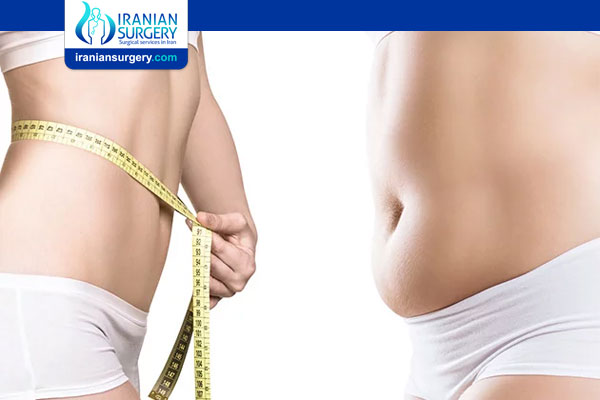why is my stomach still fat after liposuction
Why Is My Stomach Still Fat After Liposuction?
Swelling — along with bruising — is an inseparable part of liposuction. During a liposuction procedure, the surgeon uses a cannula to remove fat from the body. The cannula makes many tunnels under the skin while it moves back and forth. These tunnels become filled with fluid afterward, which is the main cause of swelling after liposuction surgery.
How Long Will Swelling After Liposuction Last?
The bulk of the liposuction swelling normally disappears after 3 to 4 weeks, but it can last for several months before subsiding completely. It reaches its peak on around day 3 after the procedure and starts to go down afterward.
Keep in mind not to compare your swelling with someone else’s because people heal differently depending on their health and body conditions. This also heavily depends on the extent of fat removal and incisions, and the post-operative care your body receives.
What Is the Best Treatment for Swelling After Liposuction?
The best treatment for Lipo swelling is actually the passage of time! Swelling and inflammation after most plastic surgeries are common and it takes time until they subside and the results become noticeable.
There are some post-op instructions that help you get rid of swelling after liposuction surgery and heal faster. Following these tips and exercising some patience is key to a fast recovery from your liposuction procedure. Here are the instructions:
Wearing a compression garment is a must
Almost all surgeons prescribe a compression garment for their liposuction patients and tell them to wear it for a few weeks. The compression garment is your best friend on the path of recovery after lipo.
Coming in a variety of sizes and shapes, compression garments make support for your body while it heals. The constant pressure that a compression garment puts on your body suppresses the buildup of fluid under the skin and helps your body absorb the fluid faster, leading to decreased swelling. This way, you will see the results of your liposuction sooner.
Wearing a compression garment after lipo also helps your skin contract and fit the new contour of your body, which in turn prevents wrinkles and creases after the surgery. There are high-quality garments with anti-microbial, breathable fabric, which provide the maximum comfort and prevent skin irritation.
Be sure to wear the compression as instructed by your surgeon. Doctors usually recommend wearing the garment 24/7 during the first two weeks following the surgery (except when bathing and showering) and 12 hours a day for the next two weeks.
Apply ice packs on treated areas
Ice packs or cold compresses work their usual magic in reducing swelling, bruising, and discomfort after surgery. Applying these remedies to swollen parts of your body after liposuction for 15-20 minutes an hour can help in reducing swelling in the first and second day after surgery, but make sure to ask your doctor to give you detailed instructions as to how to apply cold compress after surgery, and how often, because wrong application may do more harm than good.
Undergo a massage therapy
A specialized type of massage called manual lymphatic drainage (MLD) is recommended by some surgeons for the liposuction recovery. This gentle massage can reduce swelling after liposuction by increasing the drainage of fluids that accumulate under the skin.
Check with your doctor and, if approved, meet a professional lymphatic drainage masseur two times a week and have a gentle massage. Keep in mind that the massage should be done gently so that not to increase bruising and discomfort.
Cut down on salt
Reduce your salt intake and get rid of swelling faster. Sodium causes the body to retain water, which in turn increases swelling or bloating. Keep the salt shaker off the table to prevent prolonged post-liposuction swelling on your abdomen, thighs, and other areas.
No sports drinks; more water instead
Sports beverages are full of sodium and thus increase water retention in the body. It is recommended that you avoid sports drinks, such as Gatorade and Powerade, during the recovery period of your liposuction surgery in order to shorten the duration of the post-op swelling. Instead, drink plenty of water to keep your body hydrated.
Take short daily walks
Liposuction surgeons often recommend their patients to go for brisk walks on a daily basis during the first few weeks following surgery. This reduces swelling and prevents blood clots. Of course, this doesn’t mean that you engage in intense walking and running, or other strenuous physical activities.
Try dry skin brushing
Dry skin brushing has a function similar to lymphatic massage therapy. By promoting the lymphatic drainage of the body, it brings many benefits, including skin refreshment, improved immunity, improved cellulite, as well as reducing swelling. Brush your body using a natural bristle brush, available at many retail shops, 10-20 minutes before going for a shower or bath. While brushing, use long, gentle strokes toward the heart.
Take prescription anti-inflammatory drugs
Anti-inflammatory painkillers, such as aspirin and ibuprofen, alleviate not only pain, but also inflammation, and thus swelling. However, since these medications have a blood-thinning effect, which slows down healing, they should be taken with caution. Strictly follow your doctor’s instructions with regards to taking medications and unless prescribed by them, do not take over-the-counter anti-inflammatory drugs during your liposuction recovery. period.
About Iranian Surgery
Iranian surgery is an online medical tourism platform where you can find the best plastic surgeons in Iran. The price of Liposuction in Iran can vary according to each individual’s case and will be determined by an in-person assessment with the doctor.
For more information about the cost of Liposuction in Iran and to schedule an appointment in advance, you can contact Iranian Surgery consultants via WhatsApp number 0098 901 929 0946. This service is completely free.
Source:
https://ariamedtour.com/blogs/reducing-swelling-after-liposuction/


